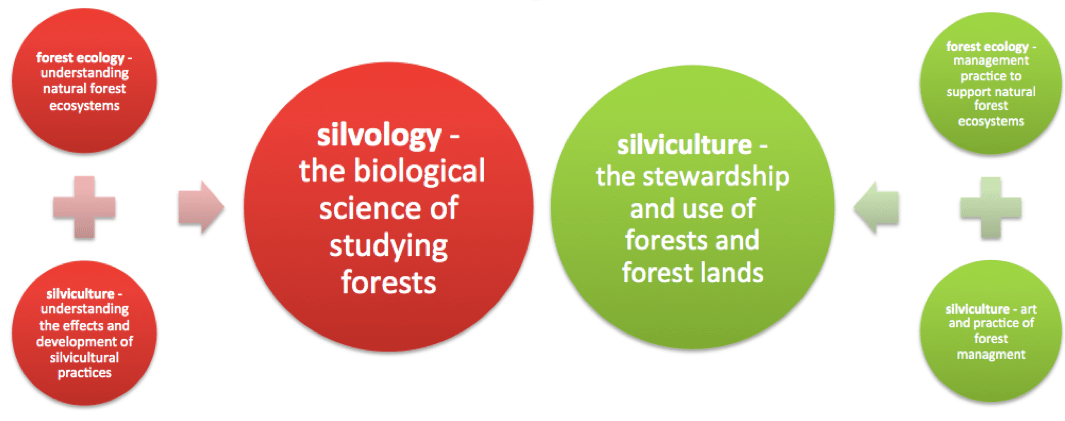Silvology: redefining the biological science for the study of forests
With co-author Jens Peter Skovsgaard I propose a formal definition for a term that describes the scientific study of forests and woods: silvology.

In contrast to other disciplines no terminology has developed to distinguish the practice of silviculture from its scientific counterpart. For example, agronomy for agricultural science and technology; dendrology for the study of trees; and, ecology for the study of organisms and their interactions with environments. We argue that silvology is the appropriate term for the scientific discipline dealing with such activities and consequently a uniting term for qualitative and quantitative aspects of forest ecology and the practice of silviculture.
Silvology defined
In order to promote the discipline of silvology the authors propose the following definition:
Silvology is the biological science of studying forests, incorporating the understanding of natural forest ecosystems, and the effects and development of silvicultural practices.
For clarity, other forms of silvology include:
silvologist n., silvological, silvologic, silvologous adj.
The role of silvology
Silvology is therefore the study of forests, and as defined above incorporates understanding of both natural systems and the effects of interventions by man in the form of silviculture. We argue that silvology is easily distinguished from silviculture provided that science is separated from art and practice. Examples of the two disciplines would include:
- A forest engineer studying compaction from forest vehicles (silvology) as opposed to building a forest road (silviculture).
- A geneticist observing heritability for a trait in a field trial (silvology) compared to a forest worker thinning the field trial (silviculture).
- A forest mensurationist recording basal areas (silvology) and the forest manager using basal areas to implement a thinning regime (silviculture).
- A forest economist developing mechanisms for attracting payment for ecosystem services (silvology) as opposed to the forest manager maintaining forest condition to adhere to regulations or grant incentives (silviculture).
- A forest ecologist observing impacts of delayed tree thinning on ground flora (silvology) versus making a forest management decision to delay tree thinning (silviculture).
Scientists working in the biological science of studying forests may call themselves silvologists, and refer to their discipline as silvology. The term could be particularly helpful within the forestry sector (which by its nature is very broad) by helping separate scientific roles and responsibilities from practical jobs. Silvology could be applied to university courses, or book and journal titles. Within scientific papers that deal with forest science silvology could be adopted as a keyword, and this may prove particularly useful where the number of keywords is limited, providing space for detailed keywords for particular elements of study.
Summary
The diverse nature of forest science, yet the lack of a defining and simple term for the scientific discipline for the study of forests and woods, is a surprising juxtaposition. ‘Silvology’ is proposed as a new scientific discipline for scientists working in the fields of forest ecosystem and silviculture research.
About my co-author
Jens Peter Skovsgaard is Professor of Silviculture at the Swedish University of Agricultural Sciences. He currently serves in the International Union of Forest Research Organizations (IUFRO) as leader of silviculture and silvology. He has extensive experience from forestry practice in previous positions as forest manager and as part-owner of 740ha of forest land in Denmark and 350ha in Lithuania.
Citation and Download
Hemery, G., and J.P. Skovsgaard. 2018. “Silvology: Redefining the Biological Science for the Study of Forests.” Quarterly Journal of Forestry 112 (April) (2): 128–31.
With thanks to the Royal Forestry Society for permission to reproduce parts of the article here, and to provide the full article here to readers.

 This work is licensed under a Creative Commons Attribution- NonCommercial- NoDerivs 3.0 United States License.
This work is licensed under a Creative Commons Attribution- NonCommercial- NoDerivs 3.0 United States License.

What is a good thinning practice for a forest; in particular Douglas Fir or Redwood Forest?